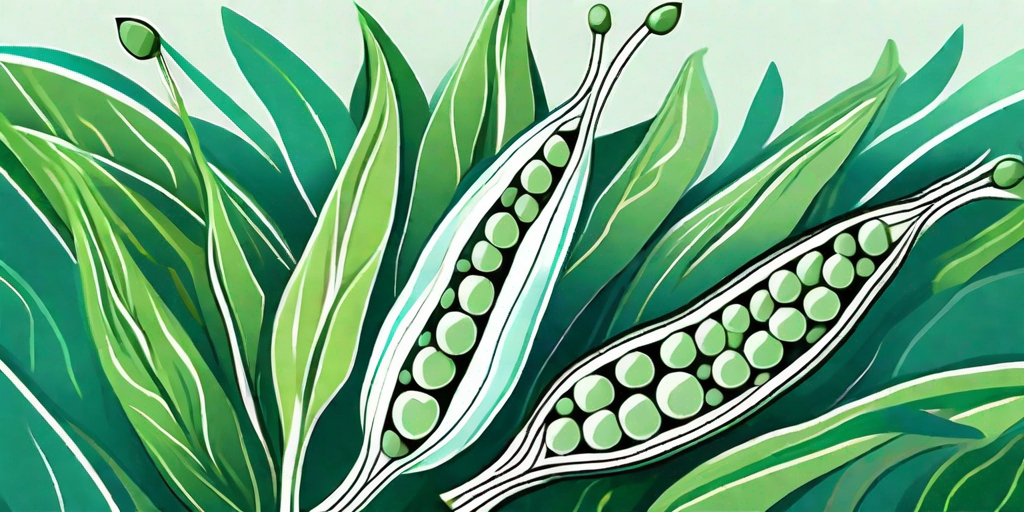
Welcome, dear reader, to the wonderful world of field peas. Now, you might be thinking, "Peas? Really? How much can there possibly be to say about peas?" Well, dear reader, prepare to be amazed. Because when it comes to field peas, there's more than meets the eye. So, buckle up, and let's dive into the fascinating world of these little green gems.
The Humble Beginnings of Field Peas
Field peas, also known as Pisum sativum, have been a staple in our diets for thousands of years. Originating in the Middle East, these little green wonders have travelled the globe, finding their way into cuisines and cultures far and wide. But how did this journey begin? Let's take a look.
Field peas were first cultivated in the fertile crescent, an area in the Middle East known for its rich soil and favourable growing conditions. From there, they spread to Europe and Asia, carried by traders and explorers. Over time, different varieties of field peas were developed, each with its own unique characteristics and uses.
The Spread of Field Peas
The spread of field peas is a testament to their versatility and adaptability. They can grow in a variety of climates and soils, making them a popular choice for farmers and gardeners alike. Whether you're in the sunny climes of Spain or the frosty landscapes of Russia, chances are, you'll find field peas growing.
But it's not just their hardiness that's made them so popular. Field peas are also incredibly nutritious, packed with protein, fibre, and a host of vitamins and minerals. This made them an invaluable food source, especially in times of scarcity.
How to Grow Your Own Field Peas
Now that we've covered the history of field peas, let's get down to the nitty-gritty: how to grow your own. Don't worry, it's not as complicated as it sounds. In fact, field peas are one of the easiest plants to grow, making them a great choice for novice gardeners.
First, you'll need to choose your variety. There are many different types of field peas, each with its own unique characteristics. Some are better for eating fresh, while others are best for drying or canning. Do a little research and choose the one that's right for you.
Planting Your Peas
Once you've chosen your variety, it's time to get planting. Field peas prefer cool weather, so it's best to plant them in early spring or late fall. They also need well-drained soil, so make sure your garden bed is prepared before you start.
Plant your peas about 1 inch deep and 2 inches apart. If you're planting multiple rows, leave about 2 feet of space between each row. This will give your peas plenty of room to grow and ensure they get enough sunlight.
Caring for Your Peas
Once your peas are planted, they'll need a little TLC to help them grow. Water them regularly, but be careful not to overwater. Field peas don't like soggy soil, so it's better to err on the side of caution.
As your peas grow, they'll start to produce tendrils that will grab onto anything they can find. To help them along, provide a trellis or some other form of support. This will keep your peas off the ground and help them grow straight and tall.
Cooking with Field Peas
Now for the fun part: cooking with your freshly harvested field peas. Whether you're a seasoned chef or a kitchen novice, there are countless ways to incorporate field peas into your meals. Here are a few of our favourites.
Pea Soup
Nothing warms the soul like a bowl of homemade pea soup. It's simple to make, yet packed with flavour. All you need are some field peas, onions, carrots, celery, and a few herbs and spices. Simmer everything together until the peas are tender, then blend until smooth. Add a dollop of cream for extra richness, if you like.
Pea Salad
For a lighter option, try a pea salad. Mix your field peas with some chopped tomatoes, cucumbers, and red onions. Toss everything in a simple vinaigrette, then top with crumbled feta cheese. It's a refreshing and nutritious side dish that's perfect for summer barbecues.
Frequently Asked Questions
Before we wrap up, let's address some common questions about field peas.
Are field peas and green peas the same?
While they're both types of peas, field peas and green peas are not the same. Field peas are typically used in dried form, while green peas are usually eaten fresh or frozen.
Can I eat field peas raw?
Yes, you can eat field peas raw, but they're usually cooked before eating. Cooking not only makes them easier to digest, but also enhances their flavour.
How long do field peas take to grow?
Field peas typically take about 60 to 70 days to mature, depending on the variety and growing conditions.
Conclusion
And there you have it, folks. Everything you ever wanted to know about field peas (and probably a bit more). Whether you're a gardener, a cook, or just a curious reader, we hope you've found this exploration of field peas both informative and entertaining. So the next time you see a pea, give it a nod of respect. After all, it's not just a pea. It's a field pea.











